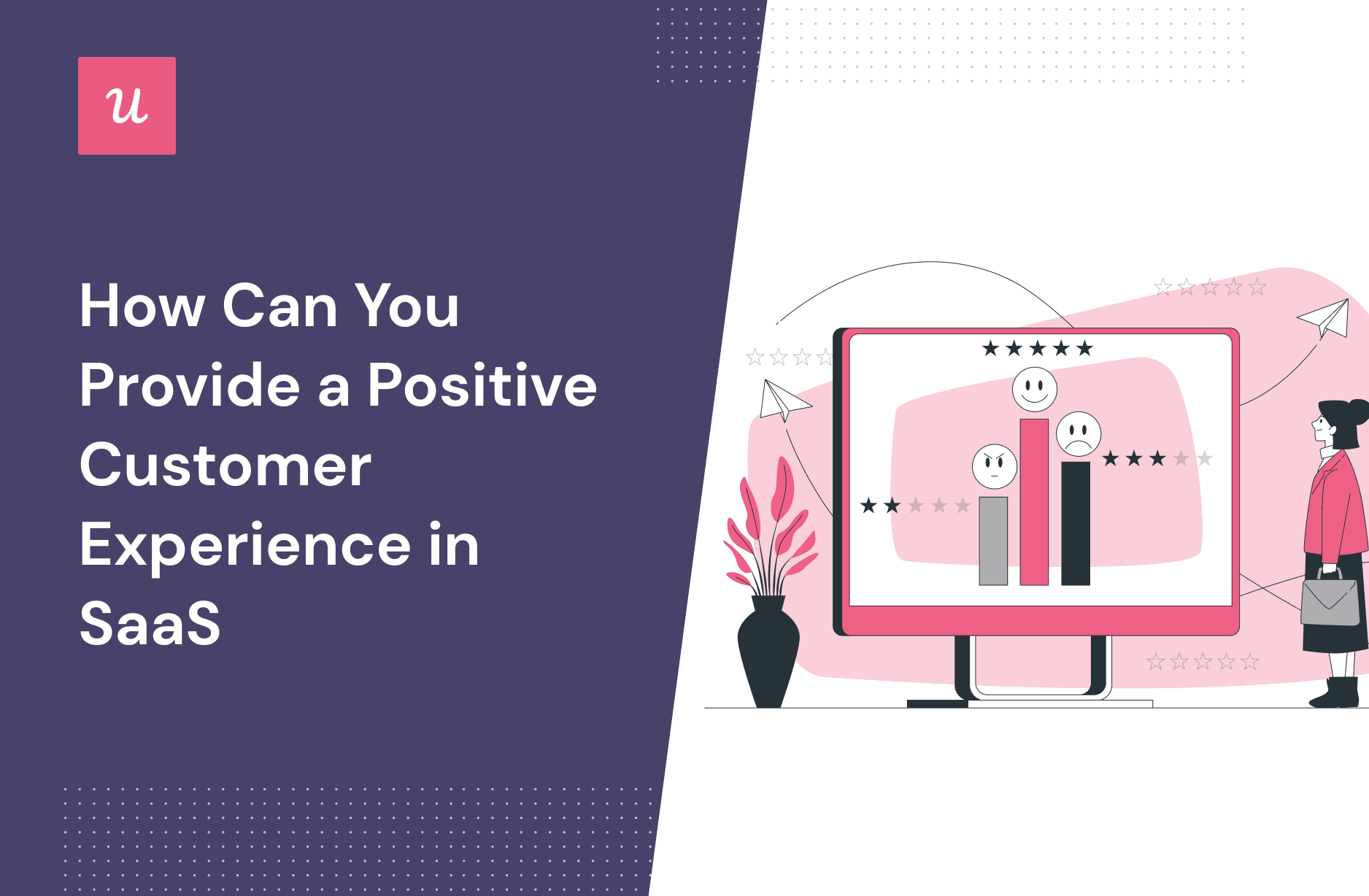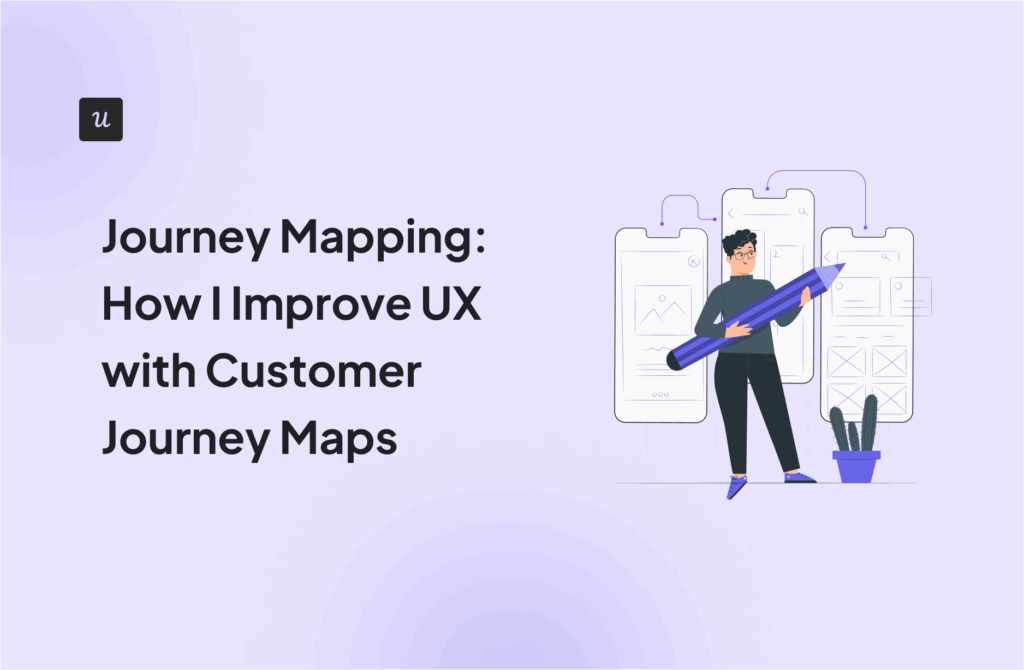
A positive customer experience is essential for keeping customers engaged. Positive experiences boost customer satisfaction and turn new users into repeat customers.
In this article, we cover:
- What a positive customer experience is and why it’s important to prioritize in SaaS.
- The five factors that make up for a great CX.
- Tips on how to provide a positive customer experience.
- Examples of positive customer experiences that drive loyalty.
Let’s get started.
Try Userpilot Now
See Why 1,000+ Teams Choose Userpilot

What is customer experience?
Customer experience is all the interactions and experiences a customer goes through in a business throughout their journey.
In other words, CX is the customer’s overall perception of your brand.
Customer experience vs customer service
Customer experience covers the entire customer’s journey and the overall customer sentiment about their interactions.
On the other hand, customer service is specific to a customer service experience – this happens when a customer reaches out to your customer service teams for help.
Why is positive customer experience important?
A remarkable customer experience is critical to sustained business growth.
A positive customer experience:
- Increases customer satisfaction.
- Helps you retain customers.
- Promotes loyalty.
- Leads to better word-of-mouth marketing and positive reviews.
When you improve your overall customer experience, you inevitably earn more revenue.
What makes a positive customer experience?
Multiple factors make up positive customer experiences:
This goes beyond calling out someone’s name. An example of personalization can be customized plans, gifts, discounts and other product experiences that help users meet their unique needs.
- Fast and reliable customer support
Quality customer service is an important part of the customer experience. People expect fast, reliable service available 24/7. And many prefer self-serve options as well, with resources like knowledge base articles and video tutorials.
- Simplicity and ease of interactions
Excellent customer experience is also influenced by how easy it is to use your product. The UI should be easy to navigate and actions should be easy to complete. Too much friction leads to negative customer experiences.
- Collecting feedback and acting on it
One great way to provide a better customer experience is to give customers exactly what they want. Collect feedback, ask for feature requests, and then act on that feedback with frequent product improvements.
- Positive emotions when using the product
Create a positive experience with joyful moments, by using badges that celebrate milestones or happy animations to celebrate a finished task.
How can you provide a positive customer experience?
Here are 12 ways to provide a positive customer experience in SaaS:
Understand customer expectations
There’s no better place to start with your customer experience management than to better understand what your customers want.
Every one of your customers is using your product to either achieve a goal or fix a problem. They may all have different goals or issues they’re motivated by – it’s your job to figure that out to create user personas. That way, you can personalize their entire customer experience to cater to their needs.

Use segmentation to provide contextual in-app experiences
Segmentation is the process of splitting customers into groups based on shared traits.
In SaaS, segmentation is used to provide personalized and relevant customer experiences at scale.
The first step of the process is collecting customer data with user feedback surveys and product usage analytics tools.
Then, you can create user segments based on traits such as JTBD, NPS score, location, and design experiences that meet the unique needs of each group.

Help customers achieve success with in-app guidance
No matter how simple you think your product is when users log into it for the first time, chances are they are going to feel stuck and confused.
And it’s your job to provide in-app guidance and support that enable them to use your product as seamlessly as possible.
One of the most effective ways of guiding users inside your app is interactive walkthroughs. These step-by-step dynamic guides handhold users and walk them through the product UI, untimely helping them to reach experience the value they signed up for.

Make customer interactions simple and easy
Make interactions as effortless as possible for the customer. Friction is the enemy of a great customer experience. Design with the user in mind and look for friction within the customer experience.
If the workflow feels difficult or confusing, look for ways to simplify the UI or improve the user experience.
You can lean into product usage data to identify friction points. One way to do so could be by setting in-app milestones and tracking completion to understand where drop-off points occur.
You can then investigate even further by looking at session recordings, conducting interviews, and adding in click tracking.

Ensure customers experience repeated value
Make sure users continuously experience value with your product by introducing them to features they haven’t adopted yet or new features.
Otherwise, they’ll stick to their routines – they’ll never discover new features because of feature blindness and miss out.
To announce major releases, you can use attention-grabbing UI patterns, called modals.
These large user interface elements sit on top of an application’s main window, making it impossible for the users to miss them.

If you have a minor update to share, use banners for a less invasive option. Either way, prioritize keeping customers in the loop about product changes and new releases with in-app messages.

Empower customers with self-service options
Give your customers the option to solve problems themselves. Many SaaS customers prefer self-service as they feel it is quicker and they can learn as much or as little as they want.
Self-service is a scalable, cost-effective way to make customers happy. It also frees up your customer service team to answer more complex questions 1-on-1.
In SaaS, self-service is offered through a knowledge base.
This is an always-on resource center that lives in your product and on your website. You can group content into modules based on feature use cases, content type, and user persona to make it more user-friendly.
For the most positive customer service experience, consider including a variety of training materials – blogs, video tutorials, and GIFs.

Create an emotional connection with customers
Emotions are the greatest motivators. They play a huge role in the buying process – people make purchases based on how a product or service makes them feel.
Customers perceive a product or service to be of higher quality if the experience has been positive. You should try to integrate experiences that spark positive emotions to keep customers coming back for more.
For example, Asana uses gamification to lift users’ moods and give them a rush of dopamine. Once a user completes a task, magical creatures appear on the screen. It’s a small added touch that goes a long way.

Make your customers feel appreciated
When customers feel valued and truly special, they’ll keep coming back to you. It’s based on the psychological principle that people are compelled to return a favor.
Make customers feel appreciated with small rewards and discounts. Not only does it speak to their ego to get this level of VIP recognition, but it also helps boost their brand loyalty.

Go one step beyond what your customer expects
Customers expect to receive great customer service. Most companies give good customer service – it’s not so much a competitive advantage.
Go beyond customer expectations with extra-special actions and exceptional service.
For example, when a loyal customer jokingly said they are a dream user, Userpilot sent them personalized merch with “Dream User” printed on it.
This simple action caught them off guard and delighted them. Moments like these get people talking, boosting brand awareness.

Capture customer feedback in real-time and improve the CX instantly
One of the best ways to know if a customer has had a positive experience with your business is to simply ask them. Survey customers along the entire customer journey to gather their feedback.
It’s especially important to collect feedback in real-time, while the customer is still having the experience. When the experience is still fresh in their mind, the feedback is more accurate.
After collecting your initial survey results, follow up to get more details on responses. Then, act on the feedback by making the changes that customers want to see.
You can use different survey types to capture customer feedback including CES, CSAT, and NPS surveys.

You can also trigger these NPS surveys directly within your mobile app, effortlessly gathering valuable user insights on-the-go.
Admit your mistakes and offer solutions
Whenever there’s a bug, customer service issue, or other problem at hand, take responsibility and let your customers know that they’re in good hands.
It’s never a good idea to brush a mistake under the rug. Own up to them, but always reassure customers on how you’re going to fix them or prevent them in the future.
Take inspiration from Asana with this error page.
They show their brand personality and bring some light-hearted humor to the problem. It also has a clear, actionable message, so you easily know what to do next. And finally, there’s a direct CTA to the next action.
Now that’s how you turn a mistake into a positive moment.

Examples of positive customer experiences that drive loyalty
Here are four examples of positive customer experiences in SaaS to inspire you:
Personalizing the empty state (Userpilot)
Empty states are the white space a user sees when they land on a product dashboard for the first time after signing up. They’re overwhelming and demotivating for new users – how do they know what to do first?
Userpilot puts users on the right path to activation by replacing empty states with checklists for each use case.
That way, they instantly know what to do to get value fast. They’re not just staring at a blank page left to figure it out themselves.
Checklists work well because they tap into a human psychology principle called Zeigarnik effect. Zeigarnik effect describes the human tendency of remembering incomplete tasks and feeling the urge to complete them and feel mental relief.

Providing support and education through mini-videos (Loom)
Loom enables customers to troubleshoot simple issues with short video tutorials. Video is an engaging way to learn – customers can see how to resolve an issue and follow along, rather than just read text.
Loom has a large library of short video tutorials for every common issue or task. Users can access them easily when they have a question so their workflow isn’t interrupted.

Collecting feedback passively, without interrupting the user workflow (Miro)
Miro collects feedback passively, without putting pressure on users and interrupting their workflow. They integrate subtle feedback widgets into their product’s UI instead of using more invasive pop-ups.
While response rates may be lower, customer experience is better with this less-invasive approach.

Implementing a loyalty program (Evernote)
Evernote strengthens customer relationships and encourages loyalty with its point-based referral program.
When users invite friends to Evernote, they get rewarded with points. These points can be redeemed for free months on their Premium plan.

Conclusion
Positive customer experience is the key to sustainable growth, more loyalty, higher retention, and happier customers.
When you prioritize your customer experience strategy, growth is faster and easier.
Want to build product experiences code-free? Book a demo call with our team and get started!







